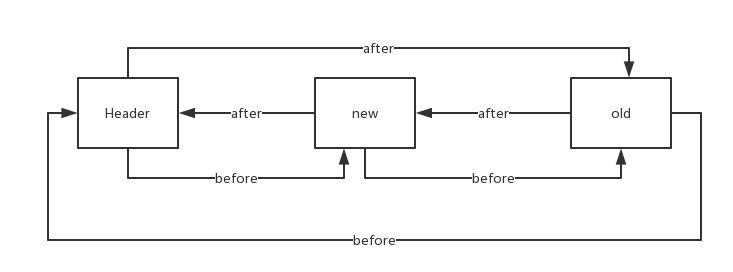散列表
先到wiki 看看散列表(Hash table)的原理描述。
散列表(Hash table,也叫哈希表),是根据键(Key)而直接访问在内存存储位置的数据结构。也就是说,它通过计算一个关于键值的函数,将所需查询的数据映射到表中一个位置来访问记录,这加快了查找速度。这个映射函数称做散列函数,存放记录的数组称做散列表。
两个重点
- 构造散列函数
- 处理冲突
HashMap
HashMap就是基于散列表的原理来实现的,看源码,获知有哪些数据结构组成了HashMap。
- 散列表,是一个数组,其长度为2的次方。
1 | /** |
- 再看散列表中存放的元素HashMapEntry<K,V>。
1 | static class HashMapEntry<K,V> implements Map.Entry<K,V> { |
其中包含的成员变量HashMapEntry<K,V> next是一个单链表的设计,所以HashMap处理冲突的方法是单独链表法。其他细节看源码吧。
LinkedHashMap
继承于HashMap,与HashMap不同的是其数组中存放的元素是LinkedHashMapEntry,总体上说是比HashMap多了一个双向链表的数据结构。
- 双向链表表头
1 | public class LinkedHashMap<K,V> extends HashMap<K,V> implements Map<K,V> { |
- 散列表中存放的元素是
LinkedHashMapEntry<K,V>,继承于HashMapEntry<K,V>,多了两个成员变量。
1 | private static class LinkedHashMapEntry<K,V> extends HashMapEntry<K,V> { |
before,after组成了一个双向链表,一个双向循环链表。这个链表串联了散列表中的所有元素,组成了一个有序列表。
LinkedHashMap利用双向链表实现了按访问元素来排序或按插入元素来排序。
总结:
LinkedHashMap完全拥有HashMap的行为、属性,只是多了一个链表,多了些行为、属性。若设置了按访问元素来排序(accessOrder == true),则每次get(Object key)操作都会让该元素置于表头header.before。插入操作会忽略accessOrder,插入新元素时都会置于表头,插入旧元素(即key已存在)则不会改变排序顺序。
根据下面代码演绎出图示,existingEntry都是指Header元素,代码中都是这么用的:e.addBefore(header);
1 | private void addBefore(LinkedHashMapEntry<K,V> existingEntry) { |

看图,哪里是表头哪里是表尾呢。我说的表头是指靠近Header的。
LruCache
LruCache的源码很少很简单。用的数据结构是LinkedHashMap,按访问元素来排序。最近最少使用的元素在表尾(eldest = header.after,header.after指向表尾)。
1 | public class LruCache<K, V> { |
不能直接使用LruCache,必须要重写它的protected int sizeOf(K key, V value)方法。